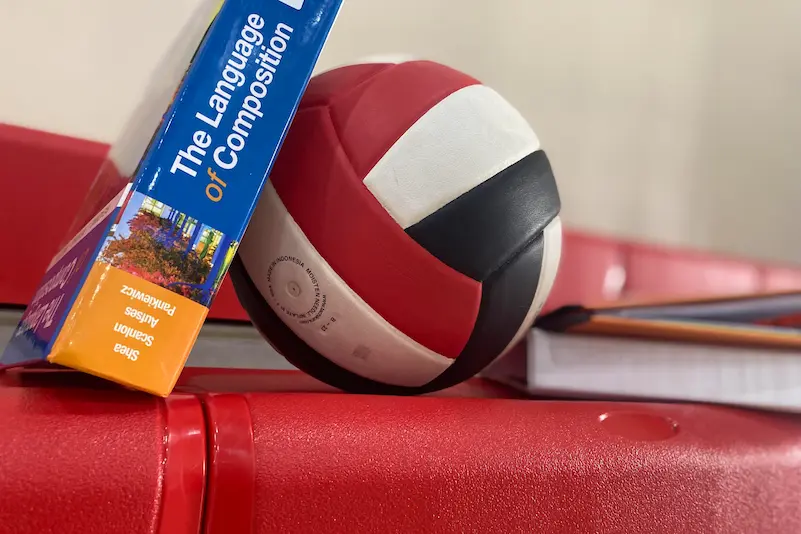School and Sport: Balancing Life as a Student Athlete

Tonight, I sat down to write this article after three hours of homework, and before that, a volleyball game in Burbank that pulled me out of my last two class periods.
My situation, though it may sound harrowing, is not rare: it’s the life of a student athlete.
Pasadena High School offers all students the choice of a whopping thirteen different sports to partake in. Athletics are one of PHS’s proudest legacies, with a boys basketball team that’s taken the Pacific League Champion title twenty out of the last twenty-one years.
The incredible victories that these players accomplish command no small effort; whether it’s waking up at 5:30am for colorguard’s zero-period, weight room five days a week, or running forty times across the football field in full padding on the hottest day of August, student athletes are putting in the work.
Athletics’ high participation rates in schools can be attributed to the many benefits of playing sports. Athletics are very rewarding for many, and not just because of the obvious fun that comes with winning games and riding the bus with teammates. Sports offer PE credit, scholarships, and qualify as impressive extracurriculars when applying for college. Moreover, exercise is crucial for maintaining cardiovascular health and muscle strength, and can even help relieve stress by release of dopamine.
But, like most things, it’s a tradeoff: championship titles in exchange for precious hours of the school day, quality free time, and a good night’s rest.
Practice is generally three-to-five times a week after school, and athletes must skip their last two class periods of school on game days. Not only do students miss valuable in-class instruction, but they must take on the responsibility of checking in with their teachers the next day and completing extra work at home.
Just last week, I had to miss four out of five days of my AP Calculus class because of volleyball. By the end of this season, I will have missed this period seventeen times - that’s seventeen hours of key instruction in a pretty difficult class, lost. It poses a legitimate question as to how some students can recover not only their grades in these classes, but their understanding of the content.
“It’s hard because as a public school, we get the short end of the stick,” laments Thor Pearson, varsity swimmer at PHS. Thor grapples with having to miss his 3:15pm Rose Bowl practices for school, a choice that many students who don’t attend traditional public school don’t have to worry about because their school accommodates for sports-related absences. For someone who aims to attend college on a swimming scholarship, Thor is critically disadvantaged this way. “It’s kind of a pay-to-win,” he says.
Freshman year, Thor qualified for CIF in swim, but the championship was on the same day as his AP Human Geography exam. Thor was then faced with a strenuous decision - take the exam that he had spent nearly a whole year studying for, or earn a spot among the best high school swimmers in the state? Of course, Thor chose the latter, forcing him to take the test at a later date. But when the day of the retake arrived, he ended up contracting Covid-19. Thor never received college credit for the class.
Though it may be an extreme, his story is the perfect example of the disruptive power that athletics can have on a student’s academic path. Despite this, Thor sticks with the sport, as do hundreds of his peers at PHS.
“I’m a student athlete because I need time to diffuse from the six-hour school day that I do,” explains Thor. He adds, “I think we have a responsibility to be well-rounded, and to pursue all areas of our lives, so that we’re actually human beings.” He likens an all-academic mindset to that of a robot, without time to focus on emotional wellbeing, personal hobbies, and maintaining a social life. These undeniably crucial elements of human development are often overlooked in the face of academic excellence.
Being a student athlete, like any challenge, will take some time to figure out. The best thing you can do is to find a balance between school and sport that works for you. And, if the tireless nights of homework and practice become too much, try to remember why you do what you do: if there’s a will, there’s a way.

